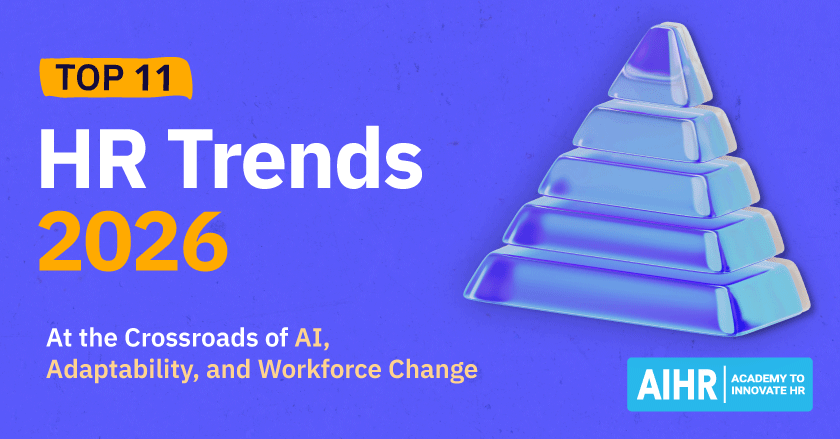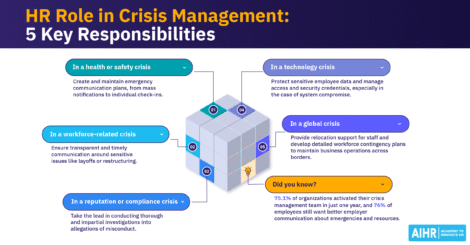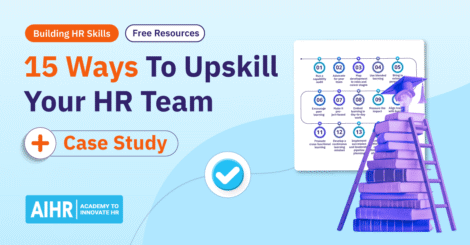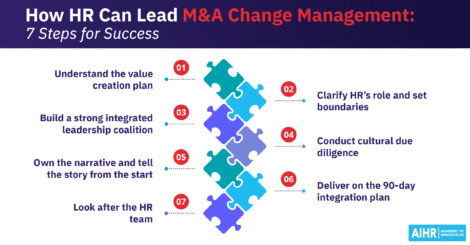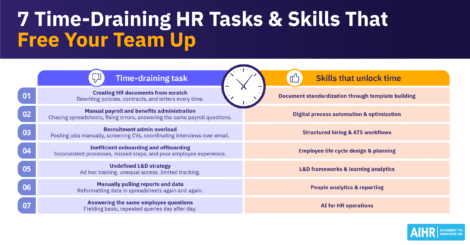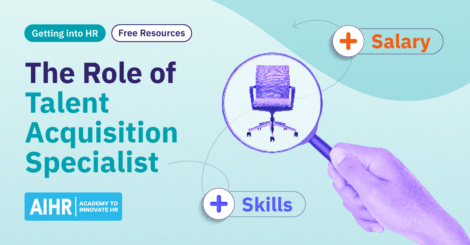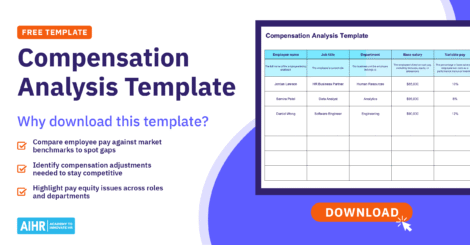HR is increasingly expected to deliver business value and support growth, but inefficiencies get in the way. These small inefficiencies add up when your team spends time chasing approvals, updating spreadsheets, or repeating manual tasks. Together, they quietly consume days of valuable time and leave HR too busy to focus on the strategic priorities that drive business success.
McKinsey’s recent HR Monitor shows just how costly this is, with key research revealing that HR teams remain “stuck in legacy, paperwork-heavy workflows” that drain capacity and widen the gap between business expectations and HR’s ability to deliver. Deloitte confirms the same pattern: manual reporting and compliance processes are not just slow; they are monotonous and error-prone and create bottlenecks that block better decision-making. These hidden inefficiencies leave HR professionals frustrated and organizations carrying a silent cost that compounds every week.
This article unpacks the seven HR tasks that quietly consume the equivalent of a full workday each week and explores how your team can reclaim that time through smarter processes, better tools, and the right upskilling, turning HR back into a driver of efficiency and impact, not a victim of unnecessary drag.
Contents
The hidden cost of inefficient HR tasks
7 HR tasks costing your team a full day every week
From busywork to business impact: How your HR team can reinvest time strategically
Key takeaways
- Hidden inefficiencies like manual payroll, onboarding gaps, and repetitive reporting can quietly drain a full workday of HR capacity each week.
- The true cost goes beyond lost hours, with manual HR tasks creating compliance risks, frustrating employees, and reducing HR’s ability to deliver on strategic priorities.
- Automation, standardization, and digital tools let HR teams shift from firefighting to strategic impact, improving hiring, retention, and workforce development.
- By upskilling through resources like AIHR’s certificate programs and team licenses, HR teams can modernize their approach and transform from an administrative bottleneck into a driver of business growth.
The hidden cost of inefficient HR tasks
Small HR teams face a triple risk: limited bandwidth, reliance on manual systems, and rising compliance complexity. According to McKinsey’s HR Monitor, many HR teams spend a lot of their time on non-strategic tasks, which directly weakens both employee experience and organizational performance. The real cost of these inefficiencies becomes clear when you break them down:
- Time drain: Small HR teams can easily spend between 6 and 8 hours a week on repetitive administration like data entry, approvals, and reporting. Deloitte’s research confirms that static, manual sources of reporting consume “substantial time and effort” and keep teams bogged down in low-value work.
- Financial cost: If an HR manager spends a full workday each week on manual admin, that equates to 10% to 15% of their annual salary effectively wasted on tasks that could be automated. McKinsey research shows that this kind of inefficiency creates a costly mismatch between what HR is expected to deliver and what current operations can support.
- Opportunity cost: Every hour spent on admin is an hour not spent on engagement, retention, and growth initiatives. Gallup’s State of the Global Workplace calculates that lost productivity from declining engagement already costs the global economy US$438 billion annually. In small teams, the trade-off is even sharper, with time drained by paperwork directly displacing work that builds culture and capability.
- Employee impact: Slow HR processes frustrate employees, whether it’s a late paycheck, delayed onboarding, or compliance bottlenecks. According to Gallup’s State of the Global Workplace Report, global employee engagement has dropped to 21%, with 62% “not engaged” and 17% “actively disengaged”. When HR is stuck in inefficiency, employees feel the friction, which feeds disengagement and turnover risk.
- Business risk: Errors in payroll, compliance, or reporting are costly liabilities. Poor manual processes create information silos and bottlenecks that increase the chance of compliance breaches. Combined with McKinsey’s finding that HR’s lag in modernization threatens broader organizational performance, the result is a tangible risk of fines, lost trust, and reputational damage.
7 HR tasks costing your team a full day every week
Paper-based approval processes, manual data entry, and reporting delays create operational bottlenecks that frustrate employees and limit how HR can allocate its resources strategically. For many HR teams, these inefficiencies are still a daily reality. Small, recurring tasks silently accumulate into a full workday every week.
Deloitte shows that digital transformation and automation consistently reduce wasted hours and errors, freeing HR to focus on initiatives that directly improve business outcomes. But these tools can only go so far without the right skills and ways of working in place to support them.
Below, we look at seven specific HR tasks that drain capacity and how smarter processes, tools, and targeted upskilling can help HR reclaim that time.
1. Creating HR documents from scratch
Every week, small HR teams lose valuable hours producing policies, contracts, and employee letters that should already exist in a structured format. Each request is treated as a new task, and the work often involves reformatting old versions, searching for past documents, or recreating entire files from the ground up. The result is duplication, inconsistency, and a steady erosion of HR’s capacity.
The cost of this inefficiency isn’t only the time spent. Without a standardized library, HR documentation varies between departments or even managers. That inconsistency creates compliance risks, creates confusion among employees, and prevents HR from scaling its processes as the organization grows. It also keeps HR in reactive mode, managing paperwork rather than shaping strategy.
→ The fix: Build a digital library of standardized templates for contracts, policies, and employee communications and pair it with e-signature tools to streamline approval cycles and reduce delays. Once centralized, HR can ensure consistency across the organization while freeing up hours every week to focus on engagement, retention, and workforce development.
Support your shift
AIHR’s Resource Library provides a ready-made foundation for this shift. HR professionals can access a wide range of policy templates, checklists, and frameworks designed by experts. These resources not only save time but also bring rigor and compliance assurance into HR operations. By adopting a template-driven approach supported by AIHR’s library, HR teams can reclaim the hours lost to repetitive document creation and redirect that time into high-value work.
Time-consuming tasks can pull HR away from the work that truly matters. With AIHR’s team-wide training and tools, your team will gain the skills to reduce admin overload and focus more on culture, engagement, and growth.
✅ Access to all 16 Certificate Programs, including future releases
✅ Templates and playbooks to streamline recurring tasks
✅ AI Assistant for HR to support faster, smarter execution
✅ Benchmark analytics and reporting to show measurable progress
Give your HR team the skills and resources to save time now and deliver lasting value.
2. Manual payroll and benefits administration
Payroll is one of the most time-intensive responsibilities for small HR teams. Hours disappear into cross-checking spreadsheets, fixing calculation errors, and fielding queries from employees about pay slips or benefit deductions. The process is repetitive, prone to mistakes, and a constant drain on the team’s workweek.
But the true cost runs deeper than lost time. When HR is consumed by manual payroll cycles, there’s little capacity left for higher-value work like compensation benchmarking or developing benefits packages that actually improve retention and engagement. Instead of shaping a competitive employee value proposition, HR is trapped in administrative firefighting.
→ The fix: Start by introducing payroll software that automates calculations, tax updates, and payment scheduling. Many tools can be integrated with your existing HRIS or accounting system without a full system overhaul. Even partial automation, such as setting up direct deposit, auto-generating payslips, or enabling employee self-service for basic payroll queries, can cut hours of manual work each cycle. Over time, this frees up HR to focus on tasks like reviewing compensation data or adjusting benefits offerings based on employee feedback.
Support your shift
AIHR’s Digital HR 2.0 Certificate Program equips HR professionals with the skills to lead this transformation. Covering automation, process optimization, and digital HR strategy, the program helps HR teams move beyond manual administration and leverage technology to create scalable, efficient payroll and benefits processes. Small teams can save hours each week and regain the capacity to drive long-term impact.
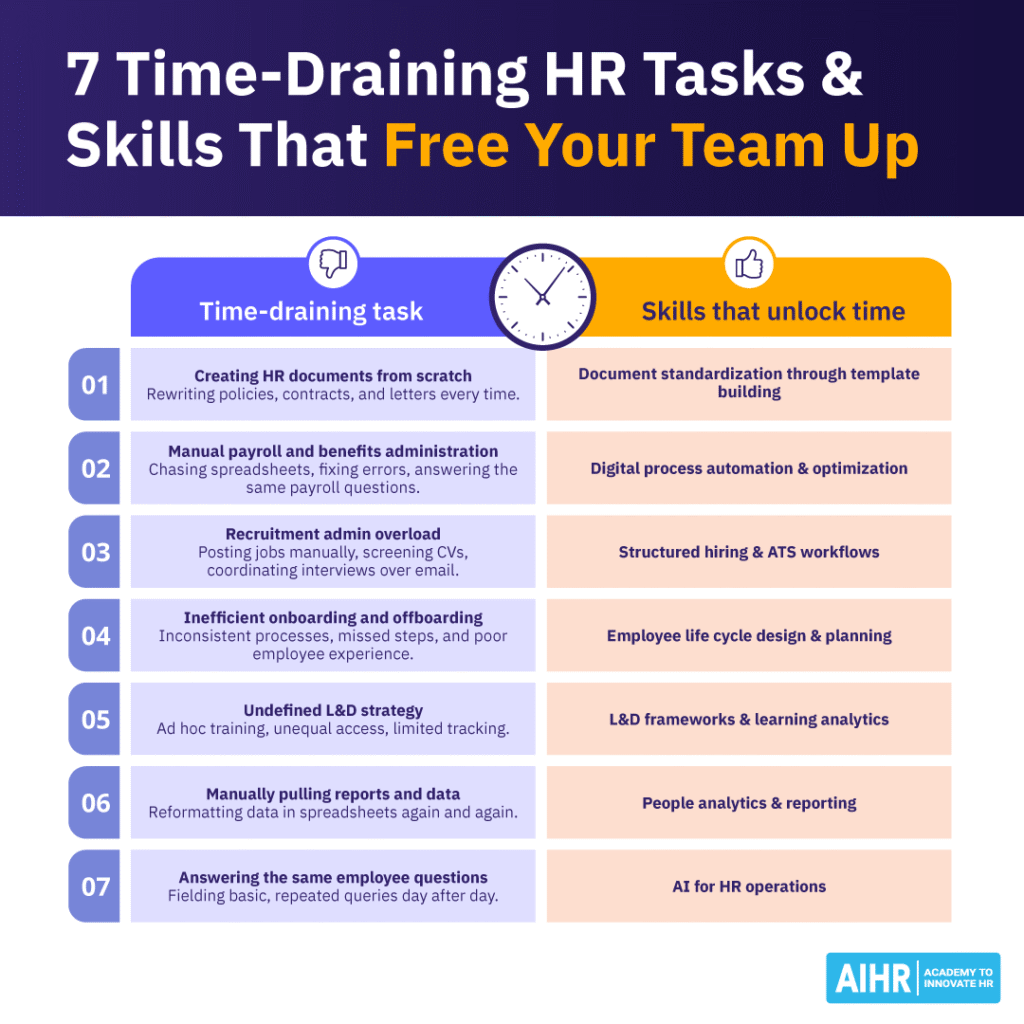
3. Recruitment admin overload
Recruitment consumes a disproportionate share of HR’s time when every step is handled manually. Job ads are posted one by one, resumes are screened by hand, and interview scheduling drags across endless email threads. Each hire requires hours of repetitive administration that could be streamlined, leaving HR constantly chasing logistics instead of shaping strategy.
The bigger issue is the opportunity lost. When HR is stuck in recruitment admin, there’s little bandwidth for proactive sourcing or employer brand building. Instead of mapping future talent needs or building candidate pipelines, teams remain in reactive mode, filling vacancies under pressure rather than guiding long-term workforce strategy.
→ The fix: Introduce an applicant tracking system (ATS) to centralize and automate key steps in the hiring process. With a structured workflow in place, you can distribute job postings to multiple platforms at once, screen resumes with pre-set criteria, and schedule interviews through built-in tools that reduce back-and-forth. This allows HR to spend less time on logistics and more time engaging candidates, evaluating fit, and building a long-term hiring strategy.
Support your shift
AIHR’s Sourcing & Recruitment Certificate Program provides HR professionals with the tools to elevate recruitment beyond administration. Covering modern sourcing strategies, structured hiring techniques, and candidate engagement, the program equips HR teams to reduce manual workload while building more strategic recruitment practices. By moving away from admin-heavy processes, small HR teams can focus on shaping the workforce of the future.
4. Inefficient onboarding and offboarding
For many HR teams, each new hire or exit feels like starting from scratch. Processes vary between managers, key steps get missed, and valuable time is spent chasing paperwork instead of guiding people through a structured experience. The result is inconsistency for new employees and unnecessary stress for HR every time someone joins or leaves.
This inconsistency comes with a bigger price. A weak onboarding experience damages the employer brand and delays how quickly new hires reach full productivity. At the other end of the employee lifecycle, poor offboarding means lost opportunities for knowledge transfer and risks around compliance if exit processes aren’t handled properly. These gaps keep HR in a reactive position rather than enabling a smooth, strategic employee journey.
→ The fix: Standardize onboarding and offboarding with digital workflows, checklists, and structured programs. With the right system, every step is tracked, reminders are automated, and managers have clear guidance on their role in the process. Employees experience consistency, and HR gains the assurance that nothing falls through the cracks.
Support your shift
AIHR’s HR Generalist Certificate Program supports professionals in building and managing consistent employee lifecycle processes, including onboarding and offboarding. The program covers HR operations, compliance, employee experience, and communication strategies, helping HR teams create efficient workflows that support both new hires and leavers while keeping everything on track behind the scenes.
5. Undefined learning and development strategy
In smaller businesses, training is too often tracked in spreadsheets, delivered through ad hoc workshops, and offered unevenly across the organization. Some employees get access to development opportunities, others don’t, and HR spends hours coordinating logistics instead of building a system that supports long-term growth.
The absence of a defined L&D strategy leaves a clear gap. Without structured development pathways, employees struggle to see how they can progress in their roles, which increases disengagement and turnover risk. For the business, it means skills don’t evolve in line with strategy. What’s more, when someone leaves the organization unexpectedly, it might create a critical skills gap.
→ The fix: Establish a structured L&D framework supported by digital learning platforms. Standardizing how training is planned, delivered, and tracked helps provide every employee with equal access to development opportunities. Data replaces guesswork, so HR can link learning to performance outcomes and prove ROI. Done well, a clear L&D strategy strengthens engagement, retention, and future workforce readiness.
Support your shift
AIHR’s Learning & Development Certificate gives HR professionals the knowledge and tools to build these frameworks from the ground up. Covering skills gap analysis, learning design, and analytics, the course equips teams to move beyond ad hoc training and create a systematic approach to employee development. With a defined L&D strategy, HR can shift from reactive training coordination to actively shaping the organization’s future capabilities.
6. Manually pulling reports and data
Reporting is one of the most persistent drains on HR’s week, and hours vanish as teams compile headcount, turnover, and absence data from scattered spreadsheets, often reformatting the same numbers multiple times for different stakeholders. The process is repetitive, slow, and leaves plenty of room for errors.
When HR is buried in manual reporting, there’s little time to connect the data to business outcomes or provide insights that influence leadership decisions. Instead of being a strategic partner, HR is seen as an operational function that delivers numbers without context.
→ The fix: Start by using the reporting features already built into your HRIS. Most modern systems allow you to pull key data without having to maintain separate spreadsheets. Focus on setting up a few saved reports or templates for your most common requests. With a small amount of upfront effort, you can reduce repetition and free up time to interpret trends instead of just compiling numbers. Even basic use of built-in analytics can help position HR as more insight-driven without requiring a full-on people analytics solution.
Support your shift
AIHR’s People Analytics Certificate helps HR professionals make this shift. The program covers the skills needed to design dashboards, interpret workforce data, and link insights to business priorities. With these skills, HR teams can reduce manual reporting and start using data to guide decisions that matter.
7. Answering the same employee questions
For small HR teams, the week is often broken into fragments by having to answer repetitive employee queries. “How many vacation days do I have left?” “Where can I find the handbook?” “Who signs off on my training request?” Each question seems minor, but together they consume hours of HR’s time. The interruptions slow down progress on bigger projects, and they also keep HR locked in a reactive, transactional role.
The larger cost is strategic. Without scalable ways to handle employee communication, HR struggles to move beyond service delivery. Time that could go into designing engagement programs, improving employee experience, or shaping retention strategies is instead absorbed by answering the same basic questions over and over again.
→ The fix: Create a simple FAQ document or internal knowledge hub that covers the most common questions about leave, policies, and processes. Use canned responses for recurring email or chat queries to cut down response time without losing the human touch. For more structure, consider setting up a shared inbox or form that reroutes requests to the right team member based on topic. These small steps make a big difference in protecting HR’s time and creating a more consistent employee experience.
Support your shift
With the AIHR Artificial Intelligence for HR Certificate Program, you’ll learn how to apply AI tools that reduce day-to-day admin, like answering routine questions, drafting documents, or summarizing feedback, so your team can spend more time on high-impact, strategic work.
From busywork to business impact: How your HR team can reinvest time strategically
Every hour of HR’s time matters. When that time is wasted on admin, the consequences are immediate: slower hiring, frustrated employees, and stunted growth. Reclaiming hours from paperwork and repetitive tasks gives HR the capacity to focus on work that drives real business impact: improving employee experience, shaping talent strategy, or supporting leadership with data-driven insights.
Hire faster and smarter
With fewer hours lost to manual recruitment admin, HR can focus on sourcing, screening, and selecting the right talent. This shift not only reduces time to hire but also improves quality of hire, giving growing businesses the skills and capacity they need to scale.
Ramp new hires quickly
Structured onboarding programs require planning and consistent delivery, two things HR rarely has time for when bogged down in admin. By reinvesting saved time, HR can create standardized onboarding experiences that help new employees become productive faster, boosting growth from day one.
Keep top performers
Retention is as critical as recruitment for all organizations. When HR has time to design learning opportunities and map clear career paths, employees see a future in the company, reducing turnover, limiting replacement costs, and strengthening culture with a workforce that grows alongside the business.
Unlock HR as a growth accelerator
The ultimate benefit of reclaiming HR’s time is strategic reinvestment. Freed from busywork, HR can drive initiatives that improve employee experience, enhance engagement, and support leadership decisions with data-driven insights.
Support your shift
AIHR’s Team License is designed for this exact inflection point. It gives growing companies access to the skills, frameworks, and tools their HR teams need to scale strategically. With practical resources across AI in HR, recruitment, L&D, people analytics, and more, AIHR helps organizations turn HR from a process bottleneck into a genuine growth accelerator.
Over to you
The silent drain on HR’s time doesn’t have to be business as usual. By identifying where inefficiencies are eating up hours and deliberately investing in smarter tools and skills, you can reclaim capacity and reinvest it in the work that fuels growth. The choice is yours: continue losing a day each week to repetitive admin, or turn HR into a strategic accelerator that hires smarter, ramps talent faster, and keeps your best people engaged.




